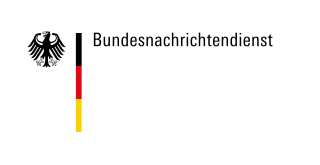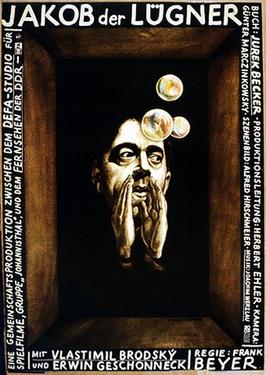Related Research Articles

The Ministry for State Security, commonly known as the Stasi, an abbreviation of Staatssicherheit, was the state security service of East Germany from 1950 to 1990.

Erich Fritz Emil Mielke was a German communist official who served as head of the East German Ministry for State Security, better known as the Stasi, from 1957 until shortly after the fall of the Berlin Wall in 1989.

Markus Johannes Wolf, also known as Mischa, was head of the Main Directorate for Reconnaissance, the foreign intelligence division of East Germany's Ministry for State Security. He was the Stasi's number two for 34 years, which spanned most of the Cold War. He is often regarded as one of the best-known spymasters during the Cold War. In the West he was known as "the man without a face" due to his elusiveness.

Ernst Friedrich Wollweber was a German politician who was State Secretary of State Security from 1953 to 1955 and Minister of State Security of East Germany from 1955 to 1957.

The Federal Intelligence Service is the foreign intelligence agency of Germany, directly subordinate to the Chancellor's Office. The BND headquarters is located in central Berlin. The BND has 300 locations in Germany and foreign countries. In 2016, it employed around 6,500 people; 10% of them are military personnel who are formally employed by the Office for Military Sciences. The BND is the largest agency of the German Intelligence Community.
East German jokes, jibes popular in the former German Democratic Republic, reflected the concerns of East German citizens and residents between 1949 and 1990. Jokes frequently targeted political figures, such as Socialist Party General Secretary Erich Honecker or State Security Minister Erich Mielke, who headed the Stasi secret police. Elements of daily life, such as economic scarcity, relations between the GDR and the Soviet Union, or Cold War rival, the United States, were also common. There were also ethnic jokes, highlighting differences of language or culture between Saxony and Central Germany.

Jacob the Liar is a 1975 war drama film directed by Frank Beyer, adapted by Beyer and Jurek Becker from the latter's novel of the same title. Set in Nazi-occupied Poland during the Holocaust, the film centers on Jakob Heym, a Polish Jew who attempts to raise the morale inside the ghetto by sharing encouraging rumors that he claims he has heard on an (imaginary) radio. The film was a co-production between East Germany and Czechoslovakia. It premiered on East German television on 22 December 1974, and was released theatrically on 18 April 1975.
Paul Gratzik was a German dramatist and novelist. He came to wider public attention in 2011 as the subject of the documentary film Vaterlandsverräter by Annekatrin Hendel about his past as a Stasi informer.

The Kampfgruppe gegen Unmenschlichkeit (KgU) was a German anti-communist resistance group based in West Berlin. It was founded in 1948 by Rainer Hildebrandt, Günther Birkenfeld, and Ernst Benda, and existed until 1959. Hildebrandt would later establish the Checkpoint Charlie Museum.
Der Rat der Götter is an East German black-and-white film, directed by Kurt Maetzig. It was released in 1950.
The Kaiser's Lackey is a 1951 East German film directed by Wolfgang Staudte, based on Heinrich Mann's 1918 satirical novel by the same name.

The Condemned Village is a 1952 East German propaganda film directed by Martin Hellberg.The film is about a man who returns from a Soviet prisoner-of-war camp to his home village in occupied West Germany and leads a resistance to the American military's plans to demolish the village to build an airfield. The film was commissioned to build East German opposition to the United States and support for the Soviet Union during the early Cold War.
Schlösser und Katen is an East German black-and-white film, directed by Kurt Maetzig. It was released in 1957.
Die gefrorenen Blitze is a two-part 1967 East-German film. The plot revolves around the history of the resistance movement in Peenemünde during the Second World War and its attempt to sabotage the V-2 program.
September Love is an East German film directed by Kurt Maetzig. It was released in 1961.
Reserved for the Death is an East German film. It was released in 1963.
John O. Koehler was a German-born American journalist and executive for the Associated Press, who also briefly served as the White House Communications Director in 1987 during the Reagan administration.
Schwarzer Samt is a German crime film from Heinz Thiel produced by the DEFA in the year 1964.
Alfred Müller was a German stage and screen actor. His career peaked in the German Democratic Republic during the 1960s and 1970s, but he was still making frequent appearances – increasingly, by this time, on the small screen – in film dramas through the 1980s. He was 63 when the wall came down and, unlike many performers who had built their careers in East Germany (1949–1989), he successfully transitioned in reunified Germany, continuing to appear in stage musicals and television dramas long after his seventieth birthday. As a result of his starring role in the 1963 East German espionage film For Eyes Only he was burdened, over many decades, with the labels, the "James Bond of the East" and "007 of the East": he detested the epithets.
Relations between East Germany and the United States formally began in 1974 until the former's collapse in 1990. The relationship between the two nations was among the most hostile during the Cold War as both sides were mutually suspicious of each other. Both sides conducted routine espionage against each other and conducted prisoner exchanges for their respective citizens which included spies for both the Americans and Soviets.
References
- ↑ Bernd Stöver. Die Befreiung vom Kommunismus. Amerikanische 'Liberation Policy' im Kalten Krieg 1947–1991. Böhlau (2002). ISBN 978-3-412-03002-5. Pages 591–600.
- 1 2 "For Eyes Only"- Ein Film und seine Geschichte.
- 1 2 3 Thomas Lindenberger (editor). Massenmedien im Kalten Krieg: Akteure, Bilder, Resonanzen. Böhlau Verlag (2006). ISBN 978-3-412-23105-7. Pages 62–75.
- 1 2 Bärbel Beuchler. Der James Bond aus dem Osten Archived 2012-03-27 at the Wayback Machine . Superillu, 25 April 2007.
- ↑ DEFA chronicle of 1964.
- ↑ DEFA chronicle of 1966.
- ↑ Uta A. Balbier, Christiane Rösch (editors). Umworbener Klassenfeind: das Verhältnis der DDR zu den USA. Links (2006). ISBN 978-3-86153-418-1. Page 164–167.
- ↑ Daniela Berghahn. Hollywood Behind the Wall: the Cinema of East Germany. ISBN 978-0-7190-6172-1. Page 41.